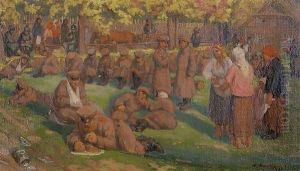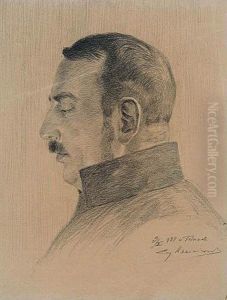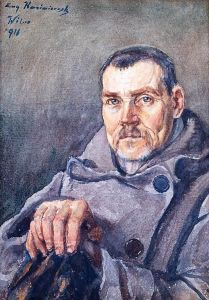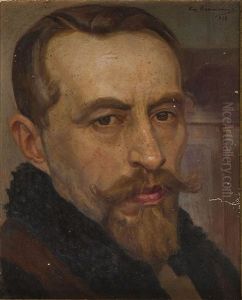Eugeniusz Kazimirowski Paintings
Eugeniusz Kazimirowski was a Polish painter, best known for being the first artist to paint the image of the Divine Mercy, based on the visions of Saint Faustina Kowalska. Born on November 11, 1873, in the village of Baranowicze, then part of the Russian Empire (now in Belarus), Kazimirowski showed an early talent for art, which led him to pursue formal education in the field.
Kazimirowski studied painting at the Kraków Academy of Fine Arts under the guidance of such notable figures as Leon Wyczółkowski and Jacek Malczewski. His artistic style was initially influenced by Symbolism and later by the emerging styles of the early 20th century. Throughout his career, Kazimirowski worked in various genres, including landscape, portrait, and religious painting, but it was his connection with Saint Faustina Kowalska that would mark his most significant contribution to religious art.
In the 1930s, Kazimirowski came into contact with Sister Faustina when he was commissioned to paint the first image of the Divine Mercy. Sister Faustina claimed to receive visions of Jesus Christ, who instructed her to create an image of his divine mercy, with specific details on how it should be depicted. Despite the challenges of interpreting these visions, Kazimirowski worked closely with Sister Faustina to ensure the painting aligned with her descriptions. The original painting was completed in 1934 and was displayed in Vilnius, where it played a key role in the Divine Mercy devotion, which has since become a significant movement within the Catholic Church.
Eugeniusz Kazimirowski's work was not widely known outside of his role in creating the Divine Mercy image, and he spent much of his later life in relative obscurity. He passed away on September 23, 1939, shortly after the outbreak of World War II, in Vilnius, which by then was part of Poland. Despite the relative anonymity of his broader artistic oeuvre, the Divine Mercy image has cemented his legacy within the context of Christian iconography. The devotion to the Divine Mercy continues to grow, and the image Kazimirowski painted remains an essential visual representation for devotees around the world.










